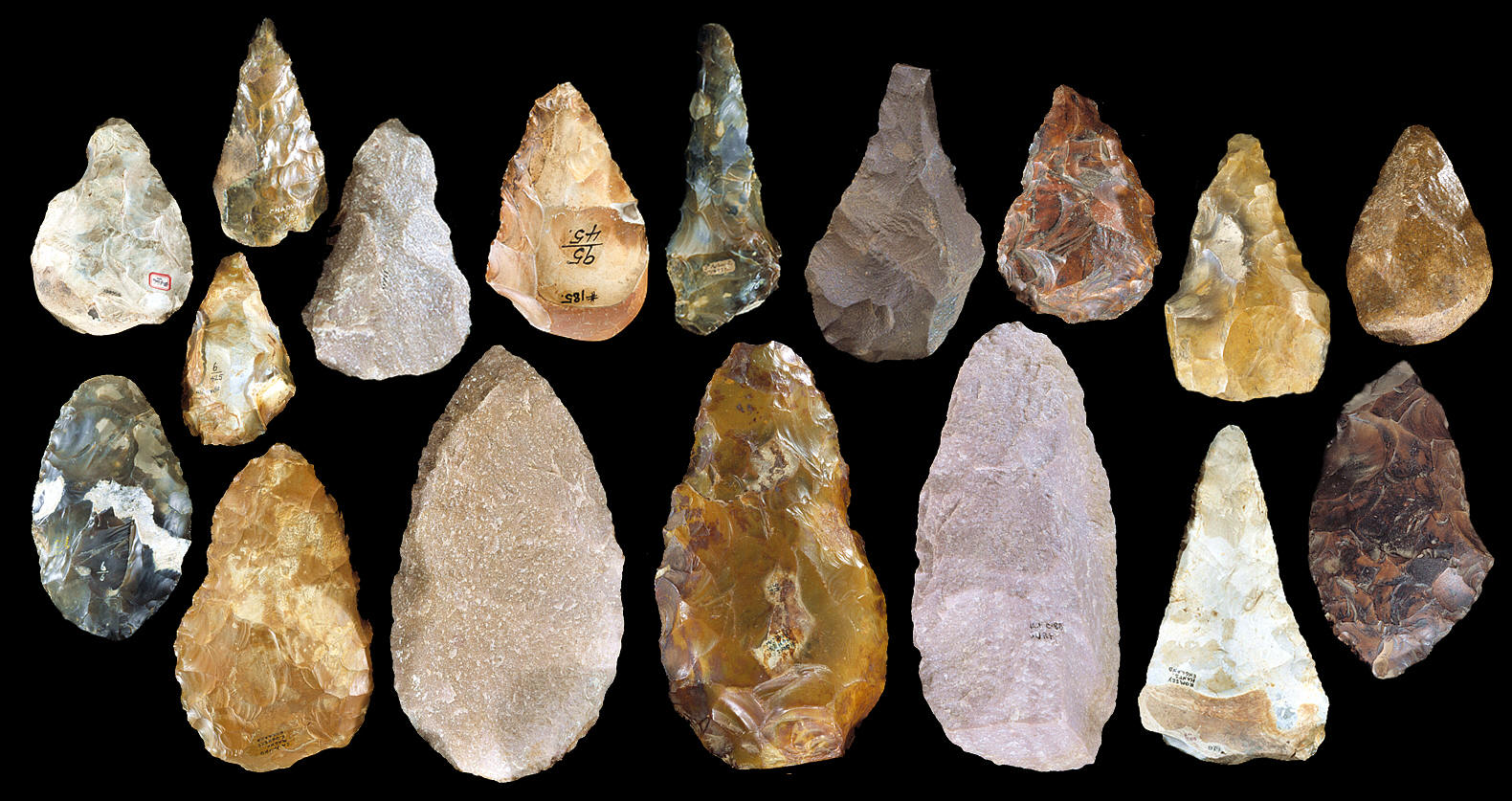|
ACHEULEAN HANDAXES
PALEOLITHIC PERIOD
FRANCE, GREAT BRITAIN AND AFRICA
EST. 750,000
TO 90,000 YEARS AGO
AMERICAN MUSEUM OF NATURAL
HISTORY,
UNIVERSITY OF CALIFORNIA-
BERKELEY-DEPARTMENT OF ANTHROPOLOGY, CRAFT RESEARCH CENTER-
INDIANA UNIVERSITY, SMITHSONIAN INSTITUTION AND PRIVATE COLLECTIONS
RETURN TO PAGE 1
COPYRIGHT MAY 31, 2008 PETER A. BOSTROM
These
seventeen handaxes illustrate a few of the many different shapes and
types of Acheulean bifaces that have been discovered on sites in
several different countries on two continents. An estimated range of
time for these bifaces is somewhere between 750,000 and 100,000
years ago. Acheulean handaxes and cleavers are the first definite,
deliberately stylized form of artifact in prehistory.
This picture illustrates handaxes from the Kalambo Falls site in
Zambia (two large pink quartzite examples,
bottom row), the St. Acheul site
near Amiens in northern France (green oval
at 2nd row left & pointed green example top center),
Abbeville in northwestern France (top row
2nd from left, bottom example),
Egypt near Thebes near the Nile River (top
row 5th from left, orange),
Romsey, England, etc.
These handaxes were made from several different grades of chert,
quartzite and basalt. They range in size from5 3/16 inches (13.1 cm)
to 9 1/2 inches
(24.1 cm) long.

|
